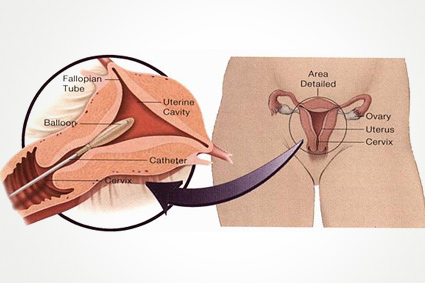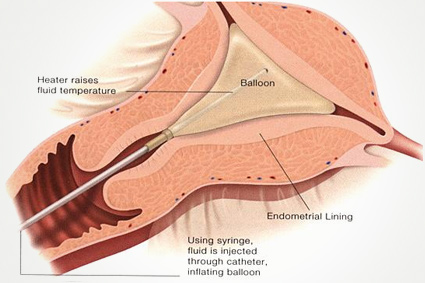Fertility Surgery in India
A minimally invasive medical surgery is a procedure that is carried out by entering your body through the skin or through a body cavity or anatomical opening. The advantage of minimally invasive surgeries is that the damage is smallest. There are many types of minimally invasive surgeries.
Laparoscopy
The laparoscopic procedure is normally done under general anaesthesia. However, in some cases it can be done with an epidural or a spinal anaesthesia thereby allowing the woman to remain awake. A Gynaecologist or surgeon will perform the procedure and anyone undergoing this type of surgical procedure will be advised to avoid eating or drinking eight hours before the procedure is scheduled.
Laparoscopic surgery is also known as bandaid surgery, or keyhole surgery. Laparoscopy is a modern surgical technique in which operations in the abdomen are performed through small incisions which are usually 0.5–1.5 cm as opposed to the larger incisions needed in laparotomy.
Undergoing minimally invasive procedure like laparoscopy has a number of advantages as against an open procedure. These include reduced pain due to smaller incisions and lesser chances of haemorrhaging, and shorter recovery time.
Hysteroscopy
Hysteroscopy is a procedure that allows your doctor to look inside your uterus in order to diagnose and treat the causes of abnormal bleeding. Hysteroscopy is done with the help of a hysteroscope. Hysteroscope is a thin, lighted tube that is inserted into the vagina to examine the cervix and inside of the uterus. Hysteroscopy can be either diagnostic or operative.
Diagnostic hysteroscopy is used to diagnose the different problems of the uterus. Diagnostic hysteroscopy is also used to confirm the results of other tests, such as hysterosalpingography (HSG). HSG is an X-ray dye test that is used to check the uterus and fallopian tubes.
Operative hysteroscopy is a method that is used to correct an abnormal condition that has been detected during a diagnostic hysteroscopy. If an abnormal condition was detected during the diagnostic hysteroscopy, an operative hysteroscopy is often performed at the same time in order to avoid the need for a second surgery. During operative hysteroscopy, small instruments are used to correct the condition and are inserted through the hysteroscope.
Your doctor may perform hysteroscopy to correct the following conditions:
- Polyps and fibroids - Hysteroscopy is used to remove these non-cancerous growths that are found in the uterus.
- Adhesions - Adhesions are also known as Asherman’s Syndrome. Uterine adhesions are bands of scar tissue that can form in the uterus and may lead to changes in the menstrual flow as well as infertility. Hysteroscopy can help your doctor locate and remove these adhesions.
- Adhesions - Adhesions are also known as Asherman’s Syndrome. Uterine adhesions are bands of scar tissue that can form in the uterus and may lead to changes in the menstrual flow as well as infertility. Hysteroscopy can help your doctor locate and remove these adhesions.
- Abnormal bleeding - Hysteroscopy can also help to identify the cause of heavy or lengthy menstrual flow, as well as bleeding between periods or after menopause. Endometrial ablation is one of the procedure in which the hysteroscope, along with other instruments, is used to destroy the uterine lining in order to treat some causes of heavy bleeding.
Hysteroscopy is a relatively safe procedure and has the following benefits:
- Shorter hospital stay
- Shorter recovery time
- Less pain and minimal medication needed after surgery
- Avoidance of hysterectomy
- Possible avoidance of "open" abdominal surgery
Balloon Therapy
Balloon Therapy is a new minimally invasive procedure that helps in treating excessive menstrual bleeding. Unlike hysterectomy, which takes out the entire uterus, the balloon therapy procedure just destroys the lining of the uterus with the help of heat.
Balloon therapy uses a soft, flexible balloon which is attached to a thin catheter or a tube. This instrument is then inserted into the vagina, through the cervix and is placed gently into the uterus.

Then the balloon is expanded with the help of a sterile fluid which expands to fit the size and shape of your uterus. The fluid in the balloon is heated to 188° F and is maintained for 8 minutes while the uterine lining is treated.

When the treatment cycle is complete, all the fluid is withdrawn from the balloon and the catheter or the tube is removed. Nothing stays inside your uterus. Your uterine lining is thus treated and will slough off like a period in the next 7-10 days.

Balloon therapy should not be used if you are planning to have a baby in near future. This is because after undergoing this therapy, pregnancies can be dangerous for both foetus and mother. There is a chance of pregnancy after undergoing this therapy; hence contraception or sterilization should be used.
About an hour before therapy, your physician may give you medication in order to minimize the cramping during and after the procedure. You may also be given a mild sedative to help you relax. In most cases, you will be awake during the procedure and may experience cramping or minimal discomfort. Your doctor may use a local anaesthesia to numb the cervix and the uterus.
Incontinence TVT
Incontinence is a very common problem among women, particularly those who are in their middle age and beyond. A wide range of treatments are available for this problem and one of them that is in demand today is called as TVT.
Tension-free surgical correction or tension-free vaginal tape, TVT represents a significant advance, thereby allowing surgery to be undertaken during day care admission, under local anaesthesia, and using a technique that is fast, simple and standardised worldwide. In TVT surgery, a mesh tape is placed under your urethra like a sling or a hammock to keep your uterus in its normal position. The tape is inserted through tiny incisions that are made in your abdomen and vaginal wall. No sutures are required to hold the tape in place. TVT surgery takes about 30 minutes and can be done under local anaesthesia so that you can cough at the surgeon's request to test the tape's support of your urethra.
You will be asked to urinate within hours of your surgery to test how your bladder and urethra respond to the surgery. You may be released to go home the same day as your surgery, or you may be asked to remain in the hospital overnight. It may be necessary to have a thin, flexible tube or a catheter placed into your bladder through your urethra in order to allow urine to drain while you recover or to teach you to do self-catheterization temporarily.
TVT surgery usually causes minimal pain and discomfort. Although you may resume most normal activities within 7 to 14 days, you will be advised to refrain from driving for two weeks and from sexual intercourse or strenuous activities for six weeks.